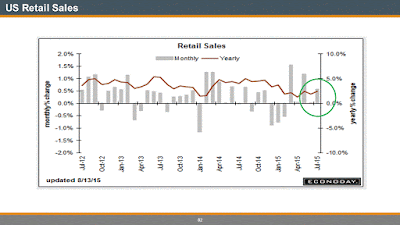What's Up With Inflation?
Lots and lots of central bankers gathered at a yearly meeting in Jackson Hole, Wyoming over the weekend to discuss inflation and how best to get it fired up again.
The grand conclusion: it's not so easy.
The US Federal Reserve believes that economic growth will continue to improve in the 2nd half of 2015 and that with this growth, inflation will naturally re-assert itself.
Bank of England Governor, Mark Carney, is in the same camp, although he admitted that they need to pay attention to what is happening in China.
The public optimism they hold is intended to transcend into the psychology of markets and the economy in general, however according to Bloomberg:
"At Jackson Hole, academics effectively delivered a beating to central banks' confidence in their ability to predict and manage their key variable, by pointing out wide gaps in knowledge about how inflation works."
In Europe and Japan, extraordinary monetery policy easing has yet to positively impact inflation. The Euro economy has improved, Japan is still struggling.
Falling commodity prices, especially in energy, have been a significant contributor to the current lack of inflation and have complicated the experts ability to predict the outcome.
Why is this important?
Because the US Federal Reserve and The Bank Of England are going to start raising interest rates and if their timing is off, there is a risk that this could choke off the 2 economies that have been growing in a global economy that has been struggling: Europe, Japan, Canada, Australia and China have all been lowering interst rates or easing monetary policy with extraordinary stimulus.
In fact, despite their optimism, the latest data on inflation from the US shows a rate well-below the Fed's target:
The uncertainty surrounding the timing of raising interest has been one of the catalysts that has created recent stock market volatility.
The real question on monetary policy, on the global scale is:
Is it wise to raise rates when there is so much global uncertainty? We believe it is not. The market odds on a September increase by the Fed are 36%.
Central bankers and finance ministers will gather to further discuss this further when the G20 meets later this week. We are of the opinion that it should not be a country by country decision (to raise/lower interest rates), but a joint decision considering the global outlook.
With this in mind, we remain cautious on the outlook for global financial markets and will continue to be defensive with our client portfolios.











































